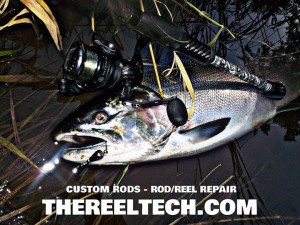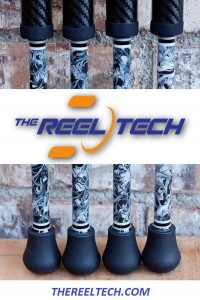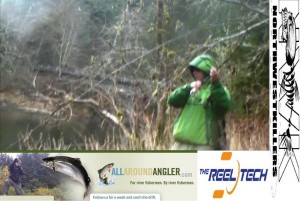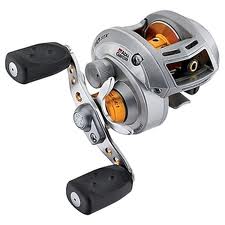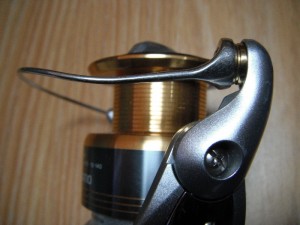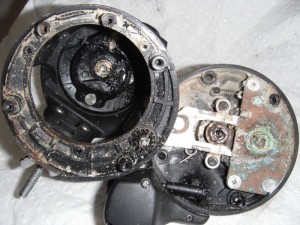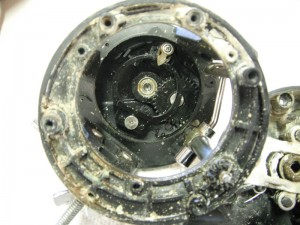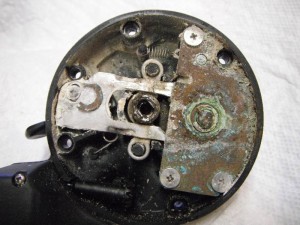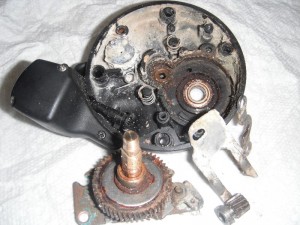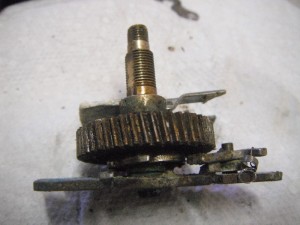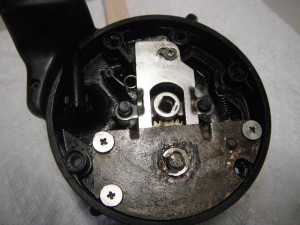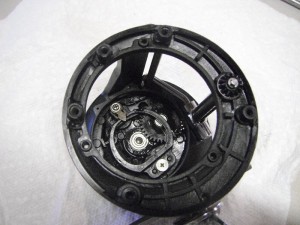Through the many years of being a professional reel technician, there has been much discussion on drag systems, as well as some confusion on the part of my customers. Here I will try to clear up some confusion and explain a bit about the differences. There are basically 2 types of drag systems, wet and dry, and each has its benefits. Either way, there is nothing worse than a jerky drag system. Drags not working in top form can cause you to lose that fish of a lifetime.
“Dry” drags are drags that require no modification and are designed to be installed as is. What makes a drag a “wet” drag is the addition of a lithium drag grease such as the Shimano drag grease or
Cal’s drag grease. The confusion I see alot is fact that not just any old grease will work, it must be a grease that is made for drag systems. Putting any old grease or oil on a drag washer will destroy its smooth fish stopping properties, and simply will not work. Also, it must be understood that not all drag material is able to be modified to a wet system.
Some drag materials are simply made to be just installed dry, and some are designed to be used with grease. Others materials are designed to be used both ways, depending on the persons preference.
Lets for example talk about the carbontex drags made by Smooth Drag Co. in Oak Hills, CA. These are a fine example of a drag that can be either installed wet or dry.
When you choose a “wet drag system” what you gain is a much smoother start up, and overall smoother performing and longer lasting drag in my opinion.
Installing the carbontex drags dry with no modification will give you a higher top end drag setting, but over time, you will not have as smooth of a startup over the entire range of drag settings.
Some people for example that fish from the river bank for hard pulling fish may opt for a dry drag system, so they can really button down on the drag to try and stop a fish they cannot follow, and keep it from going over the break. I personally am one of the guys who likes a butter smooth drag, all the time, so my personal choice would be for the wet system.
In this photo, there are 3 different examples of drag materials.
Left: Carbontex drag material that can be either installed as is, or with the addition of drag grease.
Center: Drag material designed to be installed as is with no modification.
Right: Cloth drag material designed to be used in conjunction with drag grease.
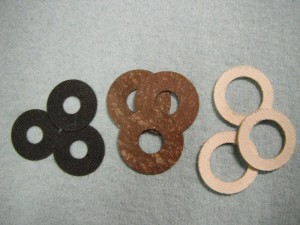
Any questions at all, feel contact me 🙂
Tight lines and screaming (not jerky) drags to ALL!!

